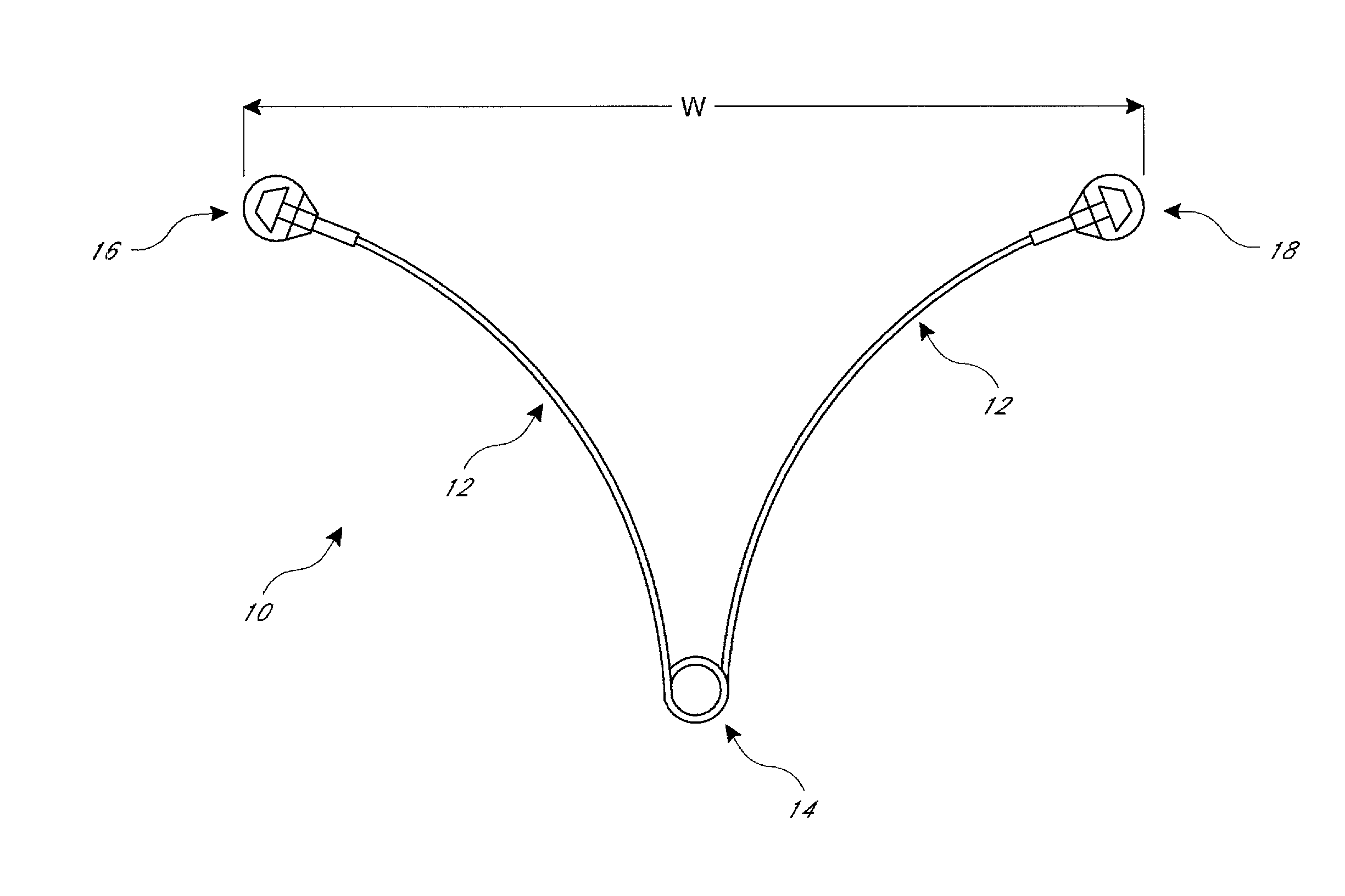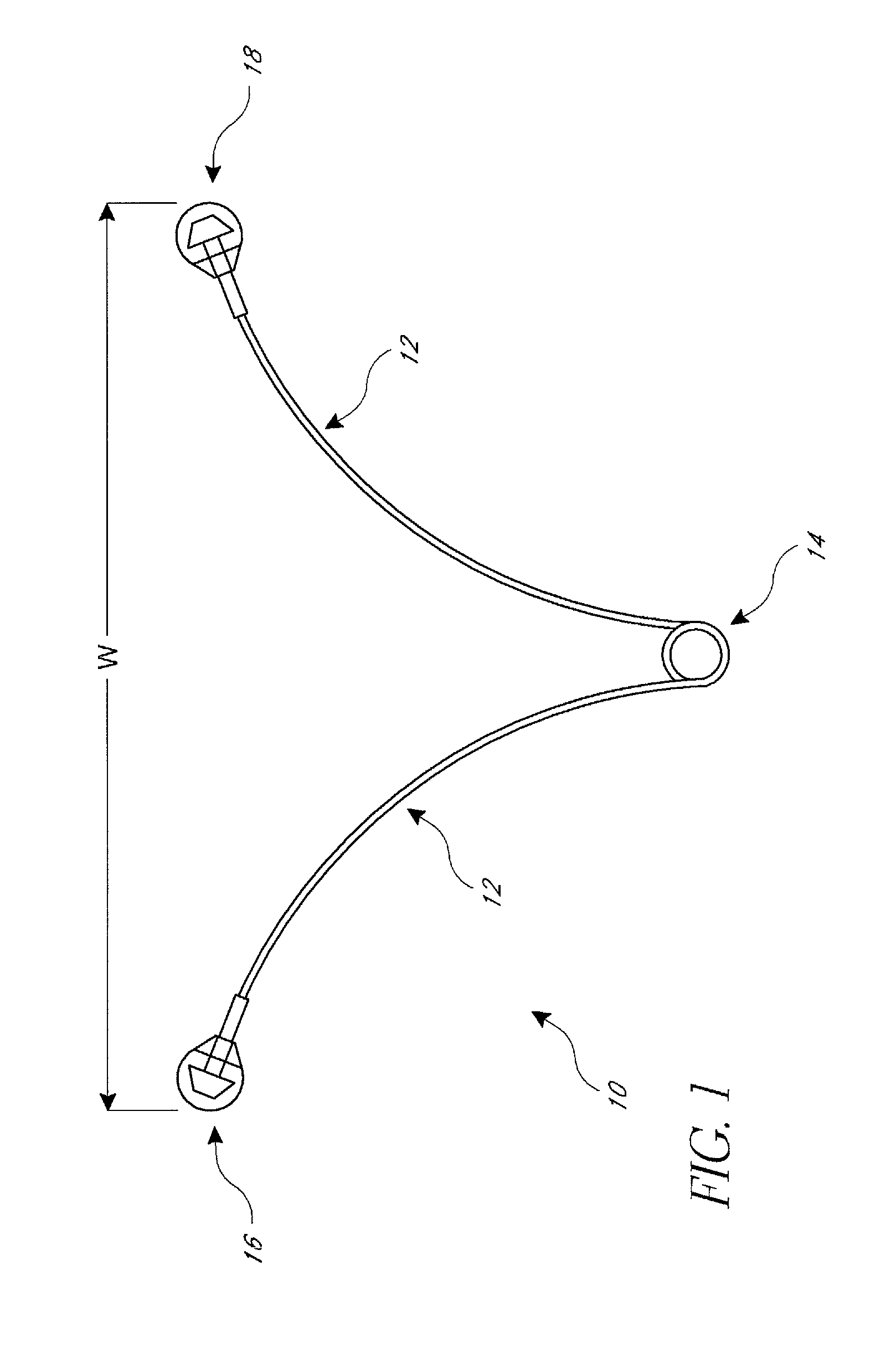Intrauterine device
a technology of intrauterine devices and uterine spirals, which is applied in the field of medical devices, can solve problems such as disruption or collapse of uterine spiral arteries, and achieve the effects of preventing migration of intrauterine devices, promoting contraception, and promoting contraception
- Summary
- Abstract
- Description
- Claims
- Application Information
AI Technical Summary
Benefits of technology
Problems solved by technology
Method used
Image
Examples
Embodiment Construction
[0056]Referring to FIG. 1, in one embodiment, an intrauterine device (IUD) 10 may include a resilient, elongate member 12 and two tissue contact members 16, 18 disposed at opposite ends of elongate member 12. Elongate member 12 may include a spring portion 14, typically disposed approximately at a midpoint between the opposite ends of elongate member 12. Elongate member 12 is manufactured from a resilient material, such as but not limited to Nitinol (nickel titanium alloy), and has a default (or “predetermined”) expanded configuration as shown in FIG. 1. Elongate member 12 may be compressed into a low profile, collapsed configuration, to facilitate delivery of IUD 10 through a cervix, typically using a delivery device. When released from compression within the uterus, IUD 10 springs back into its default expanded configuration to allow tissue contact members 16, 18 to contact and apply force against the uterine wall.
[0057]As illustrated in FIG. 1, in one embodiment, IUD 10 has a gen...
PUM
 Login to View More
Login to View More Abstract
Description
Claims
Application Information
 Login to View More
Login to View More - R&D
- Intellectual Property
- Life Sciences
- Materials
- Tech Scout
- Unparalleled Data Quality
- Higher Quality Content
- 60% Fewer Hallucinations
Browse by: Latest US Patents, China's latest patents, Technical Efficacy Thesaurus, Application Domain, Technology Topic, Popular Technical Reports.
© 2025 PatSnap. All rights reserved.Legal|Privacy policy|Modern Slavery Act Transparency Statement|Sitemap|About US| Contact US: help@patsnap.com



